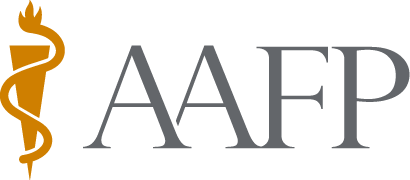
Gluten is a protein found in wheat, rye, barley, and grain hybrids. Most people can eat gluten without any problems. However, some people could be sensitive to the gluten protein. Or they might have celiac disease, which can be a serious health condition. It causes your immune system to attack and damage your small intestine. People who have this should go on a gluten-free diet.
A gluten-free diet means you avoid products that have gluten. The U.S. Food and Drug Administration (FDA) defines and controls the term “gluten-free” when it comes to food labeling. It requires that gluten-free foods contain less than 20 parts per million (ppm) of gluten.
Path to improved health
Maintaining a gluten-free diet can be hard. Gluten is found in a lot of grains. The main ones are wheat, rye, barley, and hybrids. It is in bran, semolina, and spelt. It’s also in bulgur, couscous, faro, and farina. Some flours have gluten, such as white, graham, matzo, enriched, and self-rising flours.
Avoid these foods and drinks, or check the ingredient list for sources of gluten:
- Pastas, breads, and cereals
- Croutons, breading, and stuffing
- Processed deli meat, sausage, hot dogs, and salami
- Imitation seafood and bacon
- Sauces, gravies, and thickeners
- Soup and soup bases, such as bouillon cubes
- Soy sauce and marinades
- Communion wafers
- Some candy
- Malt, malt flavoring, malt vinegar, and malt alcohol
- Beer and some alcohol
Companies often change the ingredients in processed foods, so you need to check food every time you buy it. Look for the USDA’s “gluten-free” label on packaging. Foods marked “wheat-free” are not the same as “gluten-free.” If you have celiac disease and you’re not sure if a food contains gluten, it’s best not to eat it.
Sometimes gluten is added to unlikely non-food products, such as:
- Prescription and over-the-counter medicines.
- Dietary supplements, including vitamins.
- Lipstick, lip gloss, and lip balms.
- Play-Doh (if you have Celiac disease, be sure to wash your hands after handling it)
Eating gluten-free doesn’t mean you can’t enjoy a healthy, balanced diet. A wide variety of foods naturally are gluten free. These include:
- Fruits
- Vegetables
- Meat, poultry, and fish (without marinade or coating)
- Rice (without sauce)
- Beans, legumes, and nuts
- Beans, legumes, and nuts
- Flax and chia seeds
- Gluten-free flours, such as corn, potato, soy, rice, millet, and tapioca flours
- Most dairy products, including milk, cottage cheese, cream cheese, and yogurt
- Wine, hard cider, and some alcohol
Companies also have started selling gluten-free versions of foods. Some of these options include gluten-free breads, pastas, sauces, and baked goods. You can find many of these gluten-free foods at your local grocery store. Some restaurants also have gluten-free menus. Call ahead to see what options are available.
Things to consider
Celiac disease can be very serious. You can control it by avoiding gluten. It may take time to learn how to cut gluten from your diet. Talk to your doctor for help. They will provide a list of what you can and can’t eat. They also may suggest working with a registered dietitian who can create a plan to make sure you get all the nutrients you need.
At the beginning of your diet, you may need to take a supplement. This is only needed if your body wasn’t absorbing nutrients when you ate foods containing gluten. Be sure to choose a supplement that is gluten-free.
A gluten-free diet can help reverse damage caused by celiac disease. You’ll also feel much better. If you cheat on your diet, your symptoms and damage can come back. Tips for coping include:
- Learn as much as you can about gluten-free diets. There are websites, books, and cookbooks about how to eat gluten-free.
- Ask questions when you’re eating out. The waiter or chef can provide the ingredients. A gluten-free menu may be available. Some restaurants even specialize in gluten-free diets.
- Join a support group. Talk to your doctor about finding a group for people who have celiac disease. Sharing with other people who are in the same situation as you can be helpful.
Questions to ask your doctor
- Can I eat a gluten-free diet if I don’t have gluten intolerance or sensitivity?
- Will I lose or gain weight on a gluten-free diet?
- What should I do if I accidentally eat gluten?
- Can you recommend a registered dietician?
- Can you recommend a support group for people who have celiac disease?
Resources
U.S. Food and Drug Administration: Gluten-Free Labeling of Foods
![]()
Copyright © American Academy of Family Physicians
This information provides a general overview and may not apply to everyone. Talk to your family doctor to find out if this information applies to you and to get more information on this subject.







